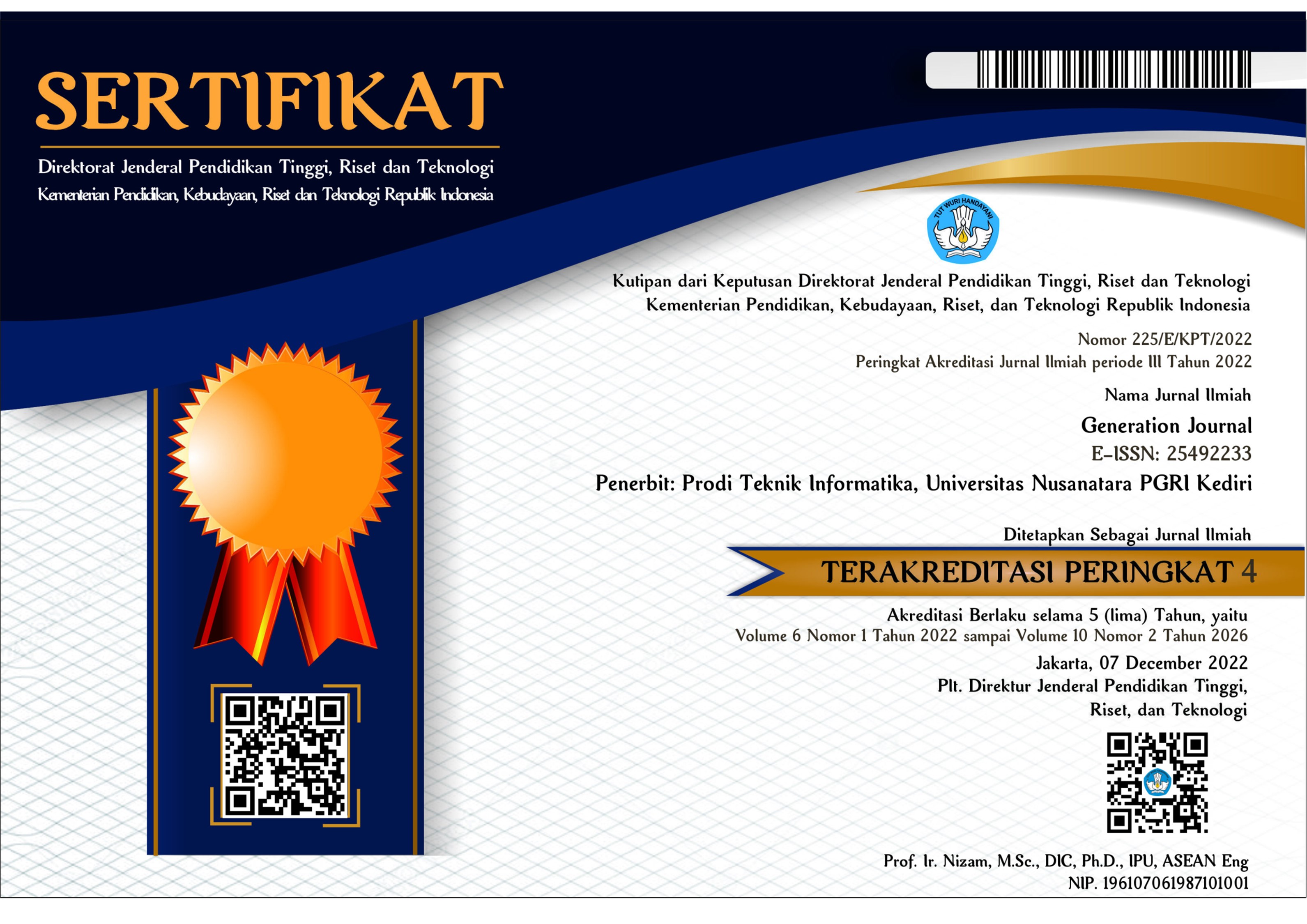Digital Signage Sistem Antrean Pembayaran Uang Kuliah Tunggal (UKT) Mahasiswa Politeknik Negeri Tanah Laut
DOI:
https://doi.org/10.29407/gj.v3i2.12897Keywords:
Digital Signage, Queue Systems, UKT PaymentsAbstract
Queue is part of a service process commonly encountered in activities, such as a queue in front of the counter to make a single tuition payment (UKT) for students. At the state Polytechnic of Tanah Laut, the queue of students who want to pay for UKT in each semester is often irregular. This is because the lack of awareness of students in implementing the queuing culture and the absence of sequence number queue. In addition to the queue sequence number, the delivery of information about queuing management also does not exist, so that need a system that can function as delivery of information in the form of Digital Signage. This system is a system that can convey information to students who want to pay UKT, information that will be delivered in the form of sequence numbers in audio (sound) and visual (picture). This system also has a feature in order to store data transactions of students who have paid UKT for data storage process is more effective because it does not have to do recording repeatedly.
References
[2] Mulyana, A. & Aria, M. 2015. Perancangan Digital Signage Sebagai Papan Informasi Digital. Majalah
Ilmiah UNIKOM, Vol. 13 No. 2, p. 111.
[3] Anthara, I. M. A. 2015. Analisis Sistem Antrian Gerbang Tol Pasteur Bandung di PT Jasa Marga
(PERSERO) Tbk. Majalah Ilmiah UNIKOM, Vol. 12 No. 1, p. 25.
[4] Rambing, P. N., Rorong, A. J. & Palar, N. R. A. 2017. Persepsi Mahasiswa Universitas Sam Ratulangi
Tentang Kebijakan Uang Kuliah Tunggal. Jurnal Administrasi Publik, Volume Vol. 3 No. 046.
[5] Wicaksono, S. R. 2008. Sistem Informasi Terintegrasi menggunakan XML Web Service. Jakarta: Cerdas
Pustaka.
[6] Rosa & M Shalahuddin. 2013. Rekayasa Perangkat Lunak Terstruktur dan Berorientasi Objek. Bandung:
Informatika.
Downloads
Published
Issue
Section
License
Authors who publish with this journal agree to the following terms:
- Copyright on any article is retained by the author(s).
- The author grants the journal, the right of first publication with the work simultaneously licensed under a Creative Commons Attribution License that allows others to share the work with an acknowledgment of the work’s authorship and initial publication in this journal.
- Authors are able to enter into separate, additional contractual arrangements for the non-exclusive distribution of the journal’s published version of the work (e.g., post it to an institutional repository or publish it in a book), with an acknowledgment of its initial publication in this journal.
- Authors are permitted and encouraged to post their work online (e.g., in institutional repositories or on their website) prior to and during the submission process, as it can lead to productive exchanges, as well as earlier and greater citation of published work.
- The article and any associated published material is distributed under the Creative Commons Attribution-ShareAlike 4.0 International License














